Intro
Discover effective Cradle Cap Treatment Options, including natural remedies, medicated shampoos, and home care routines, to soothe and clear infant scalp conditions like seborrhoeic dermatitis and eczema.
Cradle cap, also known as infantile seborrhoeic dermatitis, is a common skin condition that affects many babies. It is characterized by a thick, yellowish, crusty patch on the scalp, and can be accompanied by redness and inflammation. While it may look alarming, cradle cap is generally harmless and can be treated with a variety of methods. In this article, we will explore the different cradle cap treatment options available, as well as provide tips on how to prevent and manage the condition.
The exact cause of cradle cap is still unknown, but it is thought to be related to a combination of factors, including overproduction of skin oil, sensitivity to milk or other foods, and exposure to allergens. Cradle cap typically appears in the first few months of life and can last for several weeks or even months. While it may be unsightly, cradle cap does not usually cause any discomfort or pain for the baby. However, if left untreated, it can lead to more serious conditions, such as eczema or dermatitis.
Cradle cap can be distressing for parents, who may feel helpless in trying to soothe their baby's scalp. However, there are many effective treatment options available, ranging from gentle home remedies to medicated shampoos. By understanding the different treatment options and taking steps to prevent and manage the condition, parents can help their baby feel more comfortable and reduce the risk of complications.
Cradle Cap Treatment Options
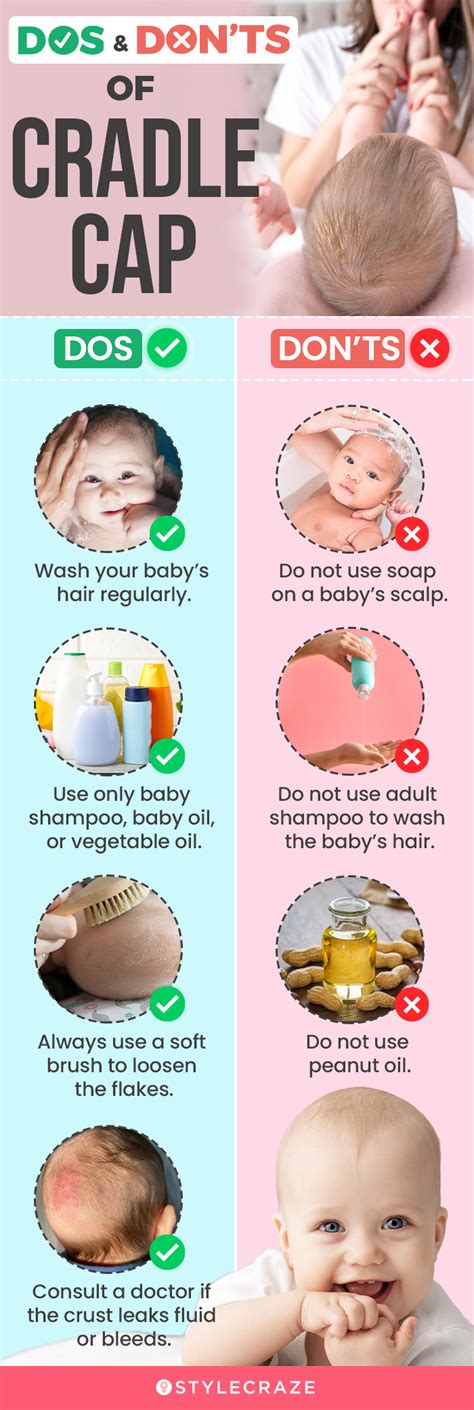
There are several cradle cap treatment options available, including home remedies, over-the-counter (OTC) medications, and prescription medications. Home remedies, such as gently massaging the scalp with oil or shampoo, can help loosen and remove the crusty patches. OTC medications, such as antifungal shampoos or hydrocortisone cream, can help reduce inflammation and prevent infection. In more severe cases, prescription medications, such as steroid creams or oral antifungals, may be necessary.
Home Remedies
Home remedies are often the first line of treatment for cradle cap, and can be effective in mild cases. Some popular home remedies include: * Gently massaging the scalp with oil, such as coconut or olive oil, to help loosen and remove the crusty patches * Using a soft-bristled brush or a fine-tooth comb to gently remove the crusty patches * Applying a warm compress to the scalp to help loosen the crusty patches * Using a medicated shampoo, such as an antifungal or antibacterial shampoo, to help reduce inflammation and prevent infectionOver-the-Counter Medications

In more severe cases of cradle cap, OTC medications may be necessary. Some popular OTC medications include:
- Antifungal shampoos, such as ketoconazole or selenium sulfide, to help reduce inflammation and prevent infection
- Hydrocortisone cream, to help reduce inflammation and itching
- Antifungal creams, such as clotrimazole or miconazole, to help reduce inflammation and prevent infection
Prescription Medications
In severe cases of cradle cap, prescription medications may be necessary. Some popular prescription medications include: * Steroid creams, such as betamethasone or clobetasol, to help reduce inflammation and itching * Oral antifungals, such as fluconazole or itraconazole, to help reduce inflammation and prevent infection * Antibiotic creams, such as neomycin or bacitracin, to help reduce inflammation and prevent infectionPreventing Cradle Cap
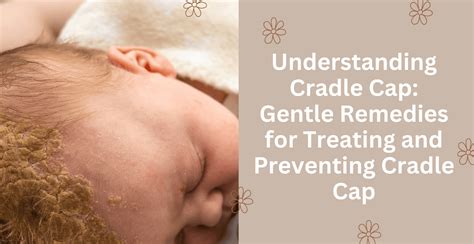
While cradle cap can be treated with a variety of methods, prevention is also key. Some tips for preventing cradle cap include:
- Keeping the scalp clean and dry
- Avoiding harsh shampoos or soaps
- Using a soft-bristled brush or a fine-tooth comb to gently remove tangles
- Avoiding tight-fitting hats or headbands
- Keeping the baby's scalp exposed to air as much as possible
Managing Cradle Cap
Managing cradle cap requires patience, persistence, and gentle care. Some tips for managing cradle cap include: * Gently massaging the scalp with oil or shampoo to help loosen and remove the crusty patches * Using a soft-bristled brush or a fine-tooth comb to gently remove tangles * Avoiding harsh shampoos or soaps * Keeping the scalp clean and dry * Avoiding tight-fitting hats or headbandsCradle Cap in Adults
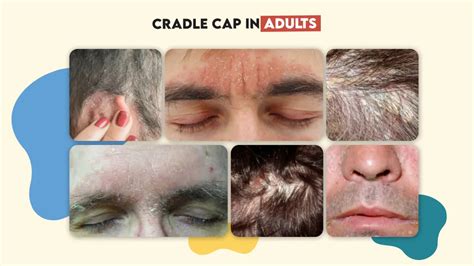
While cradle cap is most commonly associated with babies, it can also occur in adults. Adult cradle cap, also known as seborrhoeic dermatitis, can be caused by a variety of factors, including stress, hormonal changes, and exposure to allergens. Treatment for adult cradle cap is similar to treatment for infant cradle cap, and may include medicated shampoos, creams, or ointments.
Treatment Options for Adult Cradle Cap
Treatment options for adult cradle cap include: * Medicated shampoos, such as antifungal or antibacterial shampoos * Creams or ointments, such as hydrocortisone or steroid creams * Oral medications, such as antifungals or antibiotics * Lifestyle changes, such as reducing stress, avoiding allergens, and keeping the scalp clean and dryCradle Cap and Eczema
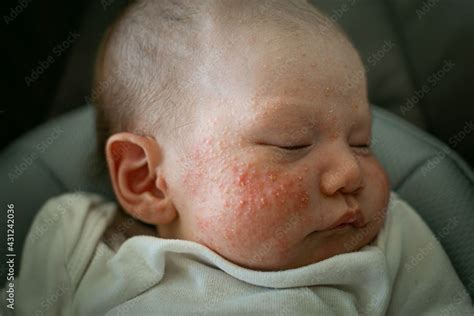
Cradle cap and eczema are two separate conditions, but they can be related. Eczema, also known as atopic dermatitis, is a chronic skin condition characterized by dry, itchy, and inflamed skin. Cradle cap can increase the risk of developing eczema, especially if left untreated. Treatment for cradle cap and eczema may include medicated shampoos, creams, or ointments, as well as lifestyle changes, such as avoiding allergens and keeping the skin moisturized.
Managing Cradle Cap and Eczema
Managing cradle cap and eczema requires a comprehensive approach that includes treatment, lifestyle changes, and self-care. Some tips for managing cradle cap and eczema include: * Keeping the skin clean and moisturized * Avoiding harsh shampoos or soaps * Using gentle, fragrance-free products * Avoiding tight-fitting clothing or hats * Reducing stress and anxietyCradle Cap and Hair Loss
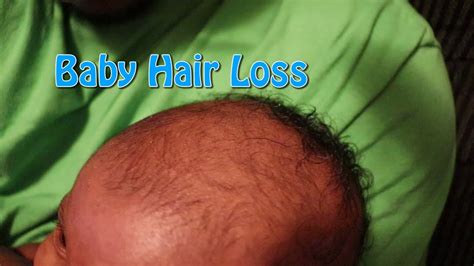
Cradle cap can cause hair loss, especially if left untreated. The crusty patches on the scalp can cause the hair to become matted and tangled, leading to breakage and hair loss. Treatment for cradle cap and hair loss may include medicated shampoos, creams, or ointments, as well as lifestyle changes, such as keeping the scalp clean and dry, and avoiding harsh shampoos or soaps.
Preventing Hair Loss
Preventing hair loss due to cradle cap requires gentle care and attention to the scalp. Some tips for preventing hair loss include: * Keeping the scalp clean and dry * Avoiding harsh shampoos or soaps * Using a soft-bristled brush or a fine-tooth comb to gently remove tangles * Avoiding tight-fitting hats or headbands * Keeping the baby's scalp exposed to air as much as possibleWhat is cradle cap?
+Cradle cap, also known as infantile seborrhoeic dermatitis, is a common skin condition that affects many babies. It is characterized by a thick, yellowish, crusty patch on the scalp, and can be accompanied by redness and inflammation.
How is cradle cap treated?
+Cradle cap can be treated with a variety of methods, including home remedies, over-the-counter (OTC) medications, and prescription medications. Home remedies, such as gently massaging the scalp with oil or shampoo, can help loosen and remove the crusty patches. OTC medications, such as antifungal shampoos or hydrocortisone cream, can help reduce inflammation and prevent infection.
Can cradle cap be prevented?
+While cradle cap cannot be completely prevented, there are steps that can be taken to reduce the risk of developing the condition. Keeping the scalp clean and dry, avoiding harsh shampoos or soaps, and using a soft-bristled brush or a fine-tooth comb to gently remove tangles can help prevent cradle cap.
Is cradle cap contagious?
+No, cradle cap is not contagious. It is a common skin condition that affects many babies, and is not caused by a bacterial or viral infection.
Can cradle cap cause hair loss?
+Yes, cradle cap can cause hair loss, especially if left untreated. The crusty patches on the scalp can cause the hair to become matted and tangled, leading to breakage and hair loss.
In summary, cradle cap is a common skin condition that affects many babies, and can be treated with a variety of methods, including home remedies, OTC medications, and prescription medications. By understanding the different treatment options and taking steps to prevent and manage the condition, parents can help their baby feel more comfortable and reduce the risk of complications. If you have any concerns about cradle cap or your baby's skin, it is always best to consult with a healthcare professional for advice and guidance. We hope this article has been informative and helpful, and we encourage you to share your thoughts and experiences with cradle cap in the comments below.
